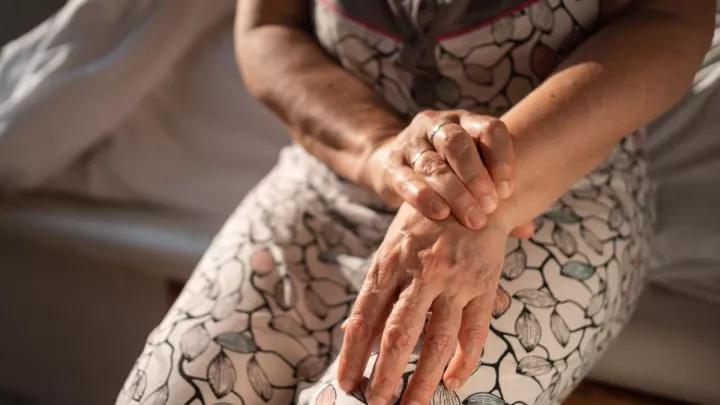Arthritis 101: What is it, am I at risk, and how do I treat it?

An estimated 58.5 million adults in the United States have arthritis. A number that is expected to increase as our population gets older.
In general terms, arthritis describes inflammation or swelling of the joints. A person with arthritis will experience pain and stiffness in one or more joints. There are more than 100 conditions that can affect your joints, tissues around the joint and other connective tissues. It is a leading cause of work disability among U.S. adults.
Types of arthritis include:
- Rheumatoid arthritis (RA): an autoimmune and inflammatory disease where your immune system attacks healthy cells in your body by mistake
- Osteoarthritis (OA): the most common form of arthritis. It is caused by regular wear and tear of the joints over time. It occurs most frequently in the hands, hips and knees
- Psoriatic arthritis (PsA): a chronic inflammation of the skin and joints that causes pain, stiffness and swelling in affected joints
- Childhood arthritis: The most common type of childhood arthritis is juvenile idiopathic arthritis. JIA can cause permanent physical damage to joints, resulting in disability
- Gout: a common form of inflammatory arthritis that is very painful. It usually affects one joint at a time (often the big toe joint)
- Fibromyalgia: a condition that causes pain all over the body, sleep problems, fatigue, and often emotional and mental distress
What type of arthritis is most common?
“In orthopaedics, we take care of all types of arthritis once they reach the end stages. At that point, surgery may be the best option to help patients relieve joint pain and regain mobility,” explains orthopaedic surgeon Christopher Deans, MD. “The main type of arthritis that we manage is osteoarthritis. This is where the cartilage within a joint begins to break down, and the underlying bone changes.”
Osteoarthritis tends to develop slowly and gets worse with age. The most common symptoms are pain, stiffness and swelling. Or, you may notice that your joints align differently, like bowing at the knees or crooked fingers. In some cases, OA can severely impair movement and cause disability.
“If you have joint pain or stiffness that is limiting your daily activities, it’s probably time to see your doctor,” says Dr. Deans. “Arthritis can be diagnosed by your primary care physician by reviewing your symptoms, doing a physical examination, and performing X-rays and lab tests.”
Am I at risk for developing arthritis?
There are certain risk factors for developing osteoarthritis. The most common is joint injury or overuse, which can increase the risk of OA in that joint. Other risk factors include:
- Age: The risk of developing OA increases as we get older
- Gender: Women are more likely to develop OA than men, especially after age 50
- Obesity: Extra weight stresses joints, particularly weight-bearing joints like the hips and knees
- Genetics: If your parents or grandparents had OA, it’s more likely you will develop the condition
“In most cases, osteoarthritis doesn’t cause much pain or limitation until we reach our sixties or seventies,” says Dr. Deans. “If it occurs in a much younger age, it is usually the result of injury, overuse or infection.”
How do you treat osteoarthritis?
While there’s no cure for OA, your doctor can help you create a treatment plan for managing the condition. This may include:
- Staying active through activities like stretching, yoga and low-impact exercises like walking, rowing, biking and swimming can help you maintain joint mobility
- Losing weight through diet, exercise, or possibly weight-loss surgery
- Medications, including over-the-counter pain relievers, prescription drugs
- Injections, mainly steroids to reduce inflammation or hyaluronic acid for lubricating joints
- Tumeric, an herbal anti-inflammatory, which can be added to foods or taken as a supplement
- Physical therapy with muscle-strengthening exercises
- Using braces or canes for support to reduce wear and tear on joints
- Using heat and cold therapy to reduce swelling and joint pain
- Orthopaedic surgery (typically joint replacement) if other treatment options haven’t helped
“One of the first steps in managing osteoarthritis is to increase your physical activity and lose weight, both of which can help you slow the progression of the condition,” says Dr. Deans. “Following an anti-inflammatory diet can be a helpful first step in managing symptoms and reducing joint pain.”
Is joint pain and stiffness limiting your life?
Call 800.922.0000 to schedule an appointment with a primary care doctor. If needed, your doctor can refer you to an orthopaedic specialist.






